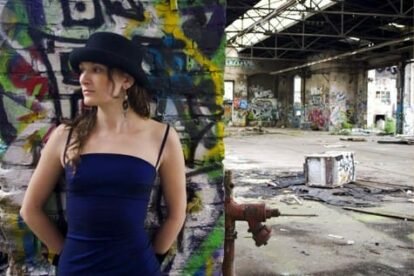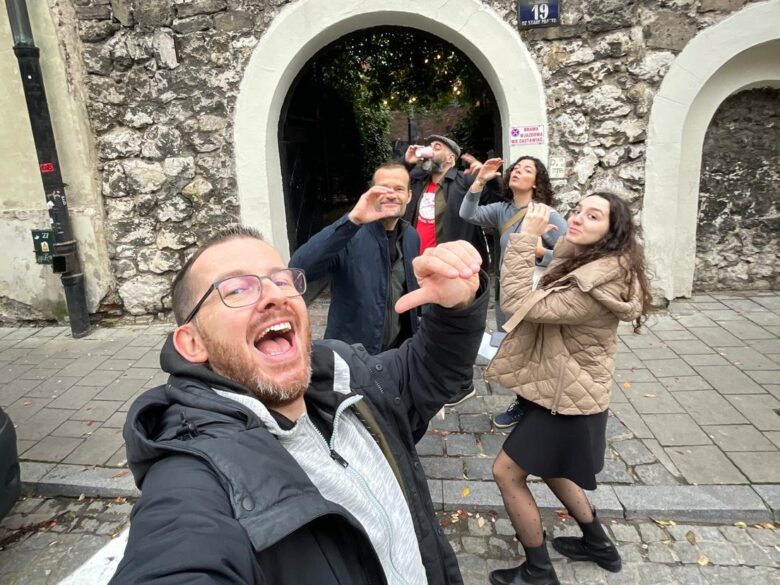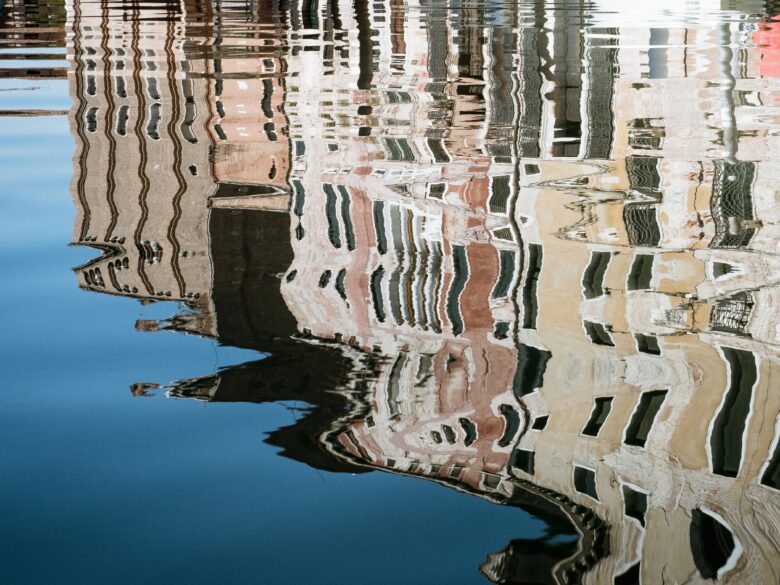
Today we have an interview with Natalia Irina Roman, Spotter for our Berlin cityblog.
Natalia took us on a really nice walk through one of Berlin’s hippest neighbourhoods: Friedrichshain. We had a drink on the Eastern Comfort ship, where she introduced us to Hefe Weizen-beer (we’re hooked ever since!). Natalia, like many Spotters, is a very busy bee! Besides being an avid Couchsurfer and event-organizer, she’s a student and works for a renowned art center.
To start off with, please tell us a bit more about yourself!
I left Bucharest more than three years ago and have been living in Germany ever since. In 2006 I came to Berlin for a program in Visual Arts and this is how the on-going story begun. The city won me over with its colours, simplicity, persuasion, relaxed atmosphere, international and friendly crowd. It keeps me here.
Berlin provided me with a context where I could easily pursue my interdisciplinary interests – it brought my Law and Visual Arts studies under the umbrella of Cultural Policy and it has not seized inspiring me in my video work. I have been eagerly exploring Berlin’s sites in general and art spaces in particular. Nevertheless, I perceive the city as continuously unfolding – there is always something new out there, be it a new building, a new project, a new gallery. Berlin keeps me curious.
In other words, who I am and what I do is intrinsically connected to the city I live in. I was a Law graduate and grew up in an interdisciplinary family, surrounded by art. Today, I am about to finish a Master of Public Policy, am working as a project assistant in a beautiful exhibition hall and I pursue a practice of arts of my own.
What do you find specific about Berlin?
Do you know the European Capital of Culture program? A city is in the spotlight for a year and gets a chance to showcase its culture – hundreds of cultural projects happen particularly for this occasion. Sibiu was the European Capital of Culture in 2007; Istanbul will be in 2010. I would describe Berlin as a permanent Capital of Culture. The projects I have seen here keep amazing me, both in numbers and content, and the city works as a magnet for artists coming from all over the world.
The particular history of Berlin put forward interesting consequences in terms of urban housing. Once the wall fell, buildings were abandoned in the East of Berlin and this gave an opportunity for open spaces. One pioneer project was Tacheles, the graffiti ruin still to be seen in Oranienburgerstr – a bunch of enthusiasts, among which also Jochen Sandig, took over the building in the 90’s and kept its doors open for people with ideas. Later on, Mr Sandig went on and founded other art spaces, among which Radialsystem is the latest, an ex water pumping station, now housing interdisciplinary events next to Ostbahnhof.
With other words, I would put at the heart of Berlin its cultural and alternative housing projects. I happen to live in one such house project myself. It is a big house which was first occupied (was abandoned and was taken over by a group of people), shortly after was bought (through a credit) and now is a foundation (dedicated to community and interdisciplinary projects). I share one wing of the house with ten other people in a big flat share. The house celebrates its culture twice a year with open doors and music. Today, the 28th of February we have our Winterfest.
What is the most popular neighbourhood to live in Berlin at this moment? And what can you do there?
Berlin is the city with more hearts. There isn’t just a single centre. When I was planning my move to Berlin, a German friend of mine told me: ‘You are not exactly moving to just one big city – Berlin is a sum of smaller cities’.
I understood only later what that was all about: there is of course a Mitte district, the central neighbourhood with the Hackesche Höfe dynamics (the beautiful and elegant inner yards), but many quarters hold on to their individuality or strive to construct one, too.
Prenzlauer Berg is known for its café and small shops culture, but also as the biggest ‘children production’ in Germany. Friedrichshain is mostly known as a student quarter, I particularly like the Cassiopeia complex next to Warschauer Str (bar, club and wall climbing), or the Landsberger Str 54 old brewery complex (red bricks and art venues). Kreuzberg has a higher density of immigrants and is mostly known for its punk culture, I particularly like the legendary club Wild at Heart, next to Görlitzer Bahnhof.
Neukölln on the other hand is the ‘upcoming Kreuzberg’, as they say; the quarter has regular events which promote their art galleries. Charlottenburg can thrill you with its renaissance classical concerts in the Charlottenburg Orangerie. To cut the story short, it is not a bad idea to keep close to Mitte, but it is good to keep in mind the other hearts of the city, too. On top of everything, Berlin has a good public transport network both during day and night. You’ll not feel left out.
What about the ‘Berlin weather’?
A blue sky is not exactly the strongest card Berlin has. One living here a full year learns to appreciate rain. However, the city has plenty to compensate for it, among others: nice brunches in Kastanienallee, original cafes, unconventional art venues, covered swimming pool on the river, not to mention the clubbing culture. On the other hand, summer days can be truly beautiful and a drink at Club der Visionäre, a bar on the river next to Schlesisches Tor, can be just right.
So what would you recommend to people coming to Berlin?
The Reichstag cupola can give you a wonderful view at night; the Friedrichstadtpalast hosts great revue theatres; the Martin-Gropius-Bau and the Hamburger Bahnhof are elegant exhibition venues; a stroll on Unter den Linden and the museum island can be great; the Berlinale film festival will surely help you get over the February cold. On the other hand, Berlin has a great alternative culture.
There are many Voküs (places where people can eat for a low amount of money), there are free shops (yes, one can have things for free, but please don’t forget that they also depend on your contributions to keep working), there are art venues in bunkers (Boros Collection) or in someone’s living room (the Hoffmann Collection). One of the last performances I have been to was a Varieté organized in an abandoned factory close to Ostkreuz (wonderful improvisation).
Berlin is an affordable, creative and young city. Try to have a glimpse of as many of its layers as possible, be curious, meet Berliners, keep up with SpottedbyLocals.com!
Check out the other interviews with our Spotters.

![10 Unique Flea Markets in Europe [2024 Update!]](https://www.spottedbylocals.com/wp-content/uploads/midnightbazar-munich-by-ayla-amschlinger.jpg)




